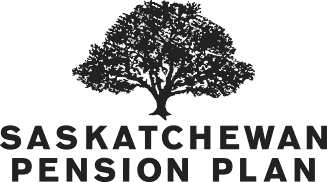Pre-Authorized Contribution
Why you should join SPP
January 19, 2017By Sheryl Smolkin

It’s registered retirement savings plan season again and media ads from financial institutions encouraging you to open a plan and invest in their products are running 24/7. But you are really not sure whether you should opt to save your hard-earned money in the Saskatchewan Pension Plan, an RRSP or a tax-free savings plan.
There is not a single answer that will meet the needs of every individual or their family. You may opt to split your savings among the three types of plans in order to meet different savings objectives. But the fact is that SPP is the ONLY one of these three types of registered plans that has a single purpose:
“To help you save money exclusively for retirement.“
You can withdraw money from your RRSP and pay the taxes in your year of withdrawal, but when you do take money out, that contribution room is totally lost to you. You can also take money out of your TFSA and your contribution room is restored the following year. However, every time you withdraw money you interrupt the tax-free growth of your contributions plus investment earnings.
SPP is a locked-in pension plan which means your account must stay with the Plan until you are at least 55 years old. In the event of your death, the money in your account will be paid to your beneficiary. Within six months of joining SPP, you can withdraw your contributions if you decide that you do not wish to participate in the Plan. After six months, the funds are locked in.
SPP follows the same income tax rules as an RRSP except that SPP is locked in. Under tax rules contributions to SPP can be used as repayments to the Home Buyers Plan (HBP) and the Lifelong Learning Plan (LLP). However SPP withdrawals are not permitted for this purpose. A taxpayer can designate all or part of the contribution as a repayment on Schedule 7 and file it with their tax return. SPP does not track repayments to the HBP.
The plan is designed to be very flexible and to accommodate your individual financial circumstances. Even contributing $10 per month will build your SPP account and provide you with additional pension at retirement. The maximum contribution is $2,500 per year subject to available RRSP room and there is no minimum contribution.
Transfers into SPP from RRSPs and unlocked RPPs of up to $10,000 a year are also allowed and spousal contributions are permitted. Contributions you make to a spouse or common-law partner’s account reduce your RRSP deduction limit. The total amount you can deduct for a given tax year cannot be more than your RRSP deduction limit. Contribution and PAC forms have a section to designate contributions for spousal deduction.
Between the ages of 55 and 71 when you opt to retire, one of the options available is to transfer to the amount in your SPP account to either a Prescribed Registered Retirement Income Fund (PRRIF) or a Locked-in Retirement account (LIRA) with another financial institution.
You can also select an annuity option. The amount of your monthly payment will depend on which annuity option you choose, your age at retirement, your account balance, and the interest and annuity rates in effect when you retire. SPP can provide a personal pension estimate for you if you call the toll-free line at 1-800-667-7153.
*****
It’s been six years since I started working with SPP and wrote my first article about the plan. I joined SPP and have transferred $10,000 in every year since. According to my June 2016 statement I had $80,140.74 in my account. By the time I am 71, I hope to have a total of about $150,000 in the plan. I like the low fees (1% a year or less) and that my money is professionally managed.
In five years I intend to purchase a joint and survivor annuity to provide a guaranteed monthly payment for my husband’s and my lifetime. This stream of income will provide further income security as we age in addition to our other pension income.
We also have other registered and unregistered savings which we can use for a variety of purposes including funding an estate for our children. But I’m pleased that that over a 30 year period the average SPP balanced fund return has been 8.10% and as of the end of November 2016, balanced fund YTD returns were 5.29%.
If you want to fund a pension that will be there when you need it most, check out SPP or top up your SPP savings. Then allocate the balance of your savings for next year to other available accounts.
You will be glad you did. After all, no one wants to put all their eggs in one basket!
